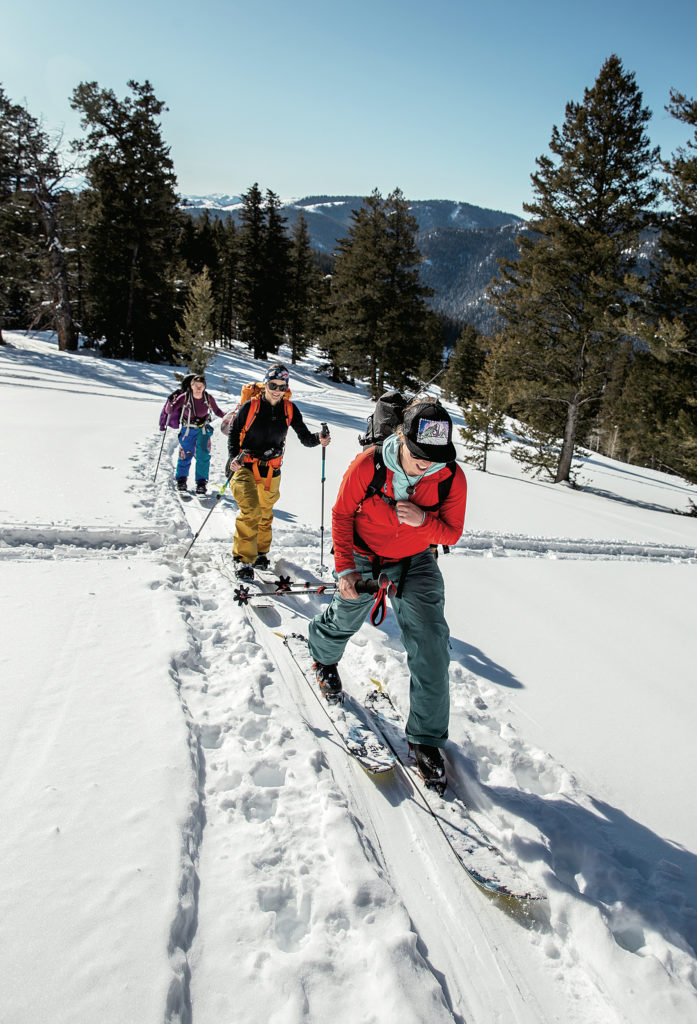The word efficiency gets used excessively these days. Everything has to be more efficient: cars, computers, factories and, yes, even splitboarders. Over the past several years, splitboard technology has improved exponentially, leaving the door wide open for resort-based snowboarders to access the mountains like never before. Boards are lighter, more durable and more functional, and lower prices have made it easier than ever to switch to splitting. As riders, we can embrace these improvements, and, using a few techniques, can make our own systems more streamlined.

Ride Your Split Gear Inbounds
Contrary to popular belief, splitboards aren’t just for the backcountry. Using your splitboard inbounds will help you understand how your board rides. It’s hard to find a board that doesn’t work well in soft snow, but riding your setup in a variety of conditions will help you learn its nuances. Dial in your stance and other adjustments at the resort to save time when you head into the backcountry.
Practice Transitions Inside
Nothing will truly prepare you for ripping skins in 30-mile-per-hour winds and below zero temperatures, but getting transitions dialed is a start. With more moving parts than skis, splitboards can take longer to transition, and it takes a while to master the process. Practice taking your board apart and putting it back together again, stripping and applying skins and even organizing your pack while inside to reduce stress when you’re out in the elements. Remember to practice with gloves on, like you would outside. In addition to carrying a full repair kit with extra screws specific to your board, consider keeping handy a small scraper for when things get iced up.

Poles Are Your Friends
Poles are a must for splitboarders, but don’t buy just any pole: Choose three-piece telescoping poles, which are sturdy, easy to repair and get small enough to strap to a pack. For the descent, poles can offer assistance to novice and expert riders alike. Hold both poles in your back hand to keep them out of your line of sight. If the powder is deep, have your poles at the ready should you take a digger: Instead of rolling around like an upside-down turtle, cross your poles in an X to create a platform to help push yourself up. When the snowpack is firm, it can be nice to rest on the poles while you wait for your friends to re-group. When riding undulating terrain or outtracks through tight trees, you can be one-footed or keep both feet strapped in—either way, use poles to maintain momentum on slight up hills and when pivoting around trees.
Master Split-Skiing
In most backcountry zones, it’s rare to be able to ride back to the car in board-mode, so being a proficient split-skier will keep you from getting left behind by two-planking friends. Before you try to send it on your asymmetrical, freeheel skis, spend some time honing your skills. First, try “skiing” with your skins still on, which will prevent you from picking up too much speed. Some riders will strap their boot to their heelpiece with a ski strap to prevent their heel from lifting while split-skiing. This can add some stability, but the system is not releasable like a ski binding. Keep your poles out, bend your knees and do not lean forward! Once you become comfortable sliding slowly, practice on mellow slopes without skins. If you own a resort pass, consider split-skiing on the bunny slope—it’ll be worth the strange looks in the long run.
There are always going to be ways to improve your riding and gain more backcountry knowledge. The best way to learn more is to get out with experienced friends or hire a professional splitboard guide who can cater learning to specific interests, needs and levels of riders.
Izzy Lazarus is a splitboard guide and avalanche-course instructor based in Jackson Hole, Wyoming. She enjoys walking her red heeler, Sundog, and is currently in search of a blue heeler to name Shadedog.
This piece was originally published in Issue #136. Pick up your copy here or subscribe.










Izzy is from NYC for gods sake, the state of American guiding is a joke. Sad to see the low level of guiding in the states